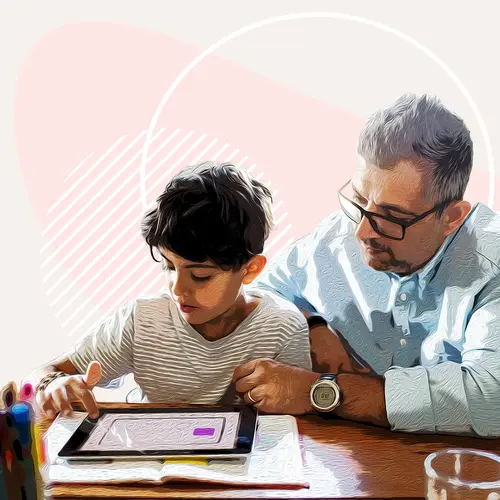Dealing with a tattletale can be difficult. Young children take rules very seriously, so they may feel the need to tell an adult when other children are breaking rules. Although tattling is a normal stage in child development, there are some things you can do to discourage it.
Why Do Kids Tattle?
As children learn about rules, they come to know what behavior is appropriate. They often don't have the problem-solving skills to deal with a situation where another child is misbehaving, so they let an adult know. Sometimes adults accidentally reinforce tattletaling behavior by giving attention to the tattler. As children get older and develop more skills to resolve peer-to-peer conflicts, they'll naturally quit tattling.
The Difference Between Tattling and Telling
Children spend a lot of time learning the rules of their families, schools, day cares, and other places where they spend time. It's natural for them to report when other children do something wrong. Many children expect to be praised for tattling and don't realize there's anything wrong with it. You can take advantage of your child's desire to follow the rules by making some rules about tattling.
You don't want to stop your child from telling you about serious issues, so don't ban tattling outright. Instead, answer your child's question, "What is a tattletale?" by explaining the difference between telling and tattling. Telling is letting an adult know that they need help handling a problem or that something dangerous is happening. If your child is telling you something because they want to protect a friend, it's not tattling.
Tattling is mean-spirited and often done to get another child in trouble. Reporting a situation that the child is able to handle themselves is also tattling. If your child can use learn the difference between situations they can handle on their own and ones they can't, they'll be less likely to tattle.
Teach Your Child to Resolve Conflicts Respectfully
Teaching your children conflict resolution skills will not only cut down on their tattling but also give them valuable skills they can use for the rest of their lives. If children don't learn to resolve conflicts productively in early childhood, it'll be much harder for them to learn later in life.
To solve conflicts, children have to be able to identify their emotions and learn to control how they express and act on their emotions. They also have to learn to interpret other people's emotions. Here are some ways you can help:
Enforce standards. Explain to your children that everyone has a right to feel safe, both physically and emotionally. Set down rules about what's allowed and not allowed when trying to resolve conflict. Let them know it's okay to name and express their feelings, but they can't react with physical aggression or name-calling.
Deal with feelings constructively. When your child is having a meltdown, help them label their emotions and work through self-regulation techniques. "You seem angry. It's frustrating when you can't swing. Can you think of something to do while you wait for your turn?".
Coach children in conflict resolution. Give each child a turn to talk and guide the discussion with questions like:
- What's the problem?
- What have you done to try to solve it?
- How did it work?
- Can you think of another idea to solve the problem?
Work through the brainstorming process with the children and talk about the pros and cons of each solution. Decide on a solution together and carry out the plan. If it doesn't solve the problem, go back to the brainstorming process.
Guide children through making amends. Think beyond "I'm sorry." If your child has hurt someone's feelings, ask them what they think would make the other person feel better. Some children may want to apologize, but they may also want to give a hug or a homemade card. The important thing is to express genuine regret.
Notice when your child makes an effort. When your child makes an effort to settle a dispute or regulates their emotions, give them positive reinforcement. For example, "I noticed you used your words when got angry instead of throwing something. Good job".
Talk about feelings. From the time your child is born, help them develop a large vocabulary about their feelings by doing the following:
- Link behavior and feelings: "I know you're angry because I see your fists are clenched."
- Introduce words that label feelings associated with conflict, like frustrated, lonely, annoyed, and left out.
- Translate other children's body language for your child: "That child is crying because he doesn't want to leave the park."
How to Respond When Your Child Tattles
When your child tattles, it's important to avoid responding in a way that will make the behavior worse. Instead of scolding them, "Don't be a tattle tale," here are some positive responses that won't encourage more tattling:
- Don't respond to tattling unless someone is in danger. Instead, encourage the tattler to tell you something about their day.
- Validate your child by recognizing that they know right from wrong.
- Affirm your child for being concerned about someone else.
- Tell your child you're sure they can work things out with their friend.
- Encourage your child to work through the conflict resolution process.
- If you need to correct the child who was tattled on, do it away from the tattler.
- Give your child lots of attention when they're behaving well.
With time, your child will learn how to solve conflicts on their own and learn when they should tell an adult about a problem. Be patient while they learn these new skills.

